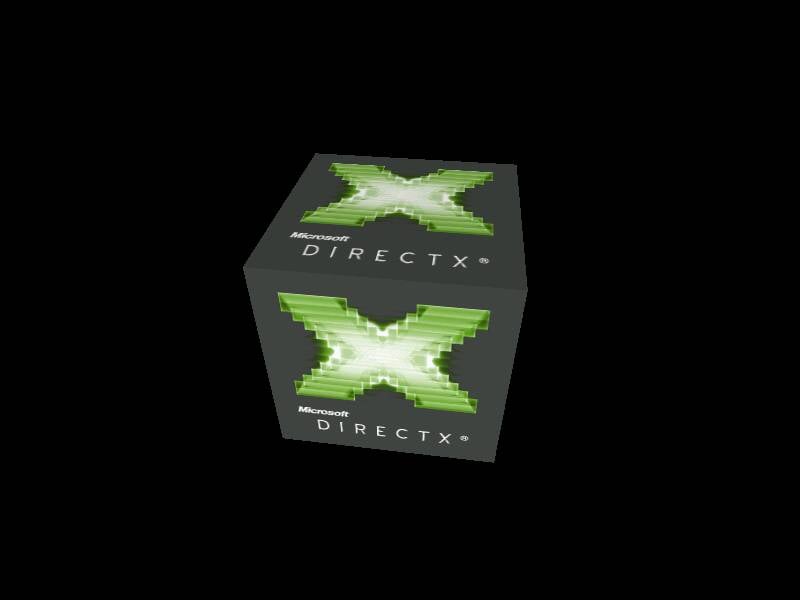These Days You Can Teach Old Tech A Bunch Of New Tricks
The retro computing hobby is always throwing up innovative ideas and methods… such as a CGA card with HDMI output, new 8088 PC systems, or drivers to enable full hardware-accelerated 3D for Windows 98 in a VM.
The Reg FOSS desk never ceases to be amazed at the creativity of the community who are into vintage computing – and more to the point, who are playing vintage games on vintage computers (and failing that, on vintage OSes running on modern computers).
Modern PCs are, very loosely, still "PC compatibles" – but what a PC of the 2020s is compatible with is PCs from earlier in the 21st century. As we mentioned when looking at the ArcaOS 5.1 distribution of OS/2, its ability to run on a UEFI PC means it is one of the few ways to run a DOS app close to the metal of modern hardware: you can't boot DOS on a UEFI computer, and that also means you can't run any of the DOS-based versions of Windows on them either. So if you want to play games that run on DOS or vintage 1990s Windows, you need to get very creative with hardware – or software.
That is a challenge, and multiple hackers and programmers are rising to it.
The new improved Graphics Gremlin
The original Graphics Gremlin is a modern graphics card for the early 1980s 8-bit ISA bus. It was designed by Eric "TubeTime" Schlaepfer, who also created the Snark Barker, a modern clone of the original Sound Blaster.
The Graphics Gremlin is based around an FPGA that is configured to emulate the ancient PC display standards of CGA and MDA. The difference is that as well as composite and nine-pin CGA ports, it can also output these ancient signals over a VGA port at VGA refresh rates so that you can display CGA (or IBM's original text-only MDA) on an analog flat-screen monitor.
The trouble is that even analog VGA is getting rarer now, which has led Yeo Kheng Meng to devise an improved Graphics Gremlin, which replaces CGA's ancient DB9 connector with an HDMI port.
It doesn't implement all of the full, copy-protected HDMI©™ standard, because that costs $5,000–$10,000 per year. So, for instance, the Graphics Gremlin can't transmit sound – but that's OK because it can't generate sound anyway.
So if you've got an 1980s PC lying around, but don't have the space for a 1980s CRT monitor to go with it, now your computer can drive a modern LCD instead. This could even be a life-saving bit of kit. Many decades-old computers suffer from the "capacitor plague" that has killed more recent devices such as Apple Time Capsules and the G5 iMac. These can be brought back to life just by replacing the failed capacitors, but that's not trivial – this vulture's iMac remains moribund, despite a valiant effort. CRT monitors contain much higher voltages than computers, though, as we described when talking about reviving the original iMac:
New 8088 PCs in 2023
If you don't have such a venerable PC, but you'd like to, there are options. There's been a surge of interest in XT-class PCs recently due to the Book 8088, an Intel 8088-powered laptop sold on AliExpress. Alternatively, you could build your own. Amazingly enough, there are new 8088 motherboards around today (at least, if you can find one). One is the NuXT. The design is open source, and some elements were used in the Book 8088. By the standards of the original IBM PC-XT, it's very highly integrated, with onboard floppy and IDE controllers, VGA graphics, PS/2 keyboard and mouse ports, and more.
- Want to live dangerously? Try running Windows XP in 2023
- One person's trash is another's 'trashware' – the art of refurbing old computers
- The ZX81 finally gets the keyboard it deserves
- Riding in Sidecar: How to get a Psion online in 2023
Unfortunately, vendor Monotech is currently out of stock, but if enough people ask perhaps it will commission a fresh batch. In the meantime, you could order a bare PCB and solder your own.

We enjoyed running the venerable Windows ME at 4K resolution. Even with large fonts, there's a lot of room
No room for hardware? Try SoftGPU
At this point, those with less gadget lust may be wondering why not just run this stuff under emulation or a VM? The problem is that back when Windows 98SE was the PC gamer's platform of choice, to run most games you needed a 3D accelerator. If you run Windows 9x in a VM, you don't get that – you get unaccelerated VGA and nothing else, and that's not enough for gaming.
The issue is that the underlying support is there, but the drivers are not. Many hypervisors support 3D acceleration for guest OSes running in VMs, to get this, you must install the guest additions. Snag: the guest additions are Windows apps, and they don't support very old versions of Windows. The VirtualBox ones require NT 4.0 or newer, for instance, and VMWware Tools wants Windows 7 SP1. If you want to use DOS-based Windows, you are stone out of luck.
Enter a very impressive Czech software project, SoftGPU. It's a compilation of four separate software projects for vintage Windows: a graphics driver for VirtualBox, a port of the Mesa3D OpenGL renderer, a version of the Direct3D drivers from WINE, and a tool that emulates Nvidia's ancient Glide drivers. The result is drivers that give Windows 95, 98 and ME hardware-accelerated 3D running under VirtualBox, VMware Workstation or QEMU.
The basic 2D graphics driver, vmdisp9x, is based on the one by Michal Necasek of the ever-informative OS/2 Museum (Pane Nečásku, jestli toto čtete, napište mi prosím!). OpenGL is provided by a pair of libraries: wine9x is a port of the WINE Project's version of Direct3D, which in turn calls mesa9x, a Windows 9x port of the Mesa3D open source OpenGL renderer. Not all games can talk directly to OpenGL, though, so there's also openglide9x, a Win9x version of OpenGlide – itself a port of Nvidia's Glide 3D graphics API, on which The Reg reported when it went FOSS back in the 20th century.
The result works on Windows 95, 98, the recommended 98 Second Edition, and even Windows ME for the masochistic. Collectively, the result delivers hardware-assisted 3D acceleration to DOS-based Windows inside a VM on a modern computer… and so a much-enhanced gaming experience. ®
From Chip War To Cloud War: The Next Frontier In Global Tech Competition
The global chip war, characterized by intense competition among nations and corporations for supremacy in semiconductor ... Read more
The High Stakes Of Tech Regulation: Security Risks And Market Dynamics
The influence of tech giants in the global economy continues to grow, raising crucial questions about how to balance sec... Read more
The Tyranny Of Instagram Interiors: Why It's Time To Break Free From Algorithm-Driven Aesthetics
Instagram has become a dominant force in shaping interior design trends, offering a seemingly endless stream of inspirat... Read more
The Data Crunch In AI: Strategies For Sustainability
Exploring solutions to the imminent exhaustion of internet data for AI training.As the artificial intelligence (AI) indu... Read more
Google Abandons Four-Year Effort To Remove Cookies From Chrome Browser
After four years of dedicated effort, Google has decided to abandon its plan to remove third-party cookies from its Chro... Read more
LinkedIn Embraces AI And Gamification To Drive User Engagement And Revenue
In an effort to tackle slowing revenue growth and enhance user engagement, LinkedIn is turning to artificial intelligenc... Read more


